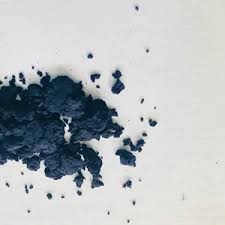Best Natural Blue Dye
Exploring the Best Natural Blue Dyes
In recent years, there has been a surge of interest in natural dyes as people have become more conscious of the environmental impact of synthetic alternatives. Among the various colors, blue has often been regarded as the most elusive and challenging to produce naturally. However, several plant-based sources yield beautiful shades of blue, making them sought-after choices for artisans, designers, and eco-conscious consumers. Let's explore some of the best natural blue dyes and their significance.
Exploring the Best Natural Blue Dyes
Another remarkable source of blue dye is woad (Isatis tinctoria), a plant native to Europe. Woad was historically significant in the Middle Ages and was used extensively before the introduction of indigo from other regions. This plant, like indigo, requires a fermentation process, allowing the pigment to develop. Woad is often praised for its vibrant blue hue, which can be somewhat softer and greener compared to the deep indigo blue. The revival of interest in woad has been part of a broader movement to reconnect with traditional dyeing practices and sustainably sourced materials.
best blue dye natural

While indigo and woad are the most prominent natural blue dyes, there are other lesser-known sources worthy of mention. For example, some species of butterfly pea (Clitoria ternatea) produce a striking blue pigment. Commonly found in Southeast Asia, this flower is often used for its natural coloring properties in food and beverages. The dye extracted from the butterfly pea flower can change colors based on pH levels, resulting in vibrant blues that can shift to purples and pinks. This dual functionality in both textiles and culinary applications underscores the versatility of natural dyes.
Moreover, the hunt for blue dyes has led to a renewed appreciation for other plants. Many artisans experiment with natural materials, like red cabbage or elderberries, to obtain unique shades of blue through natural fermentation and oxidation processes. These methods not only celebrate the beauty of the natural world but also highlight the creativity and innovation of those working with these materials.
The resurgence of natural dyes also represents a broader commitment to sustainable practices in fashion and textile production. As consumers become more aware of fast fashion's ecological footprint, many are seeking garments that are made using eco-friendly dyes and sustainable processes. Natural blue dyes offer a way to enrich the textile industry with vibrant colors while reducing environmental harm.
In conclusion, the pursuit of the best natural blue dyes illustrates the intersection between tradition and innovation. As we delve into the rich colors extracted from plants like indigo, woad, and butterfly pea, we not only celebrate their aesthetic value but also promote sustainable practices that honor our planet. As more people embrace these natural sources, we can expect a vibrant renaissance in the world of dyeing—one that intertwines art, culture, and environmental consciousness. Whether you're an artisan or a consumer, choosing natural blue dyes is a step toward a more sustainable and colorful future.
-
The Timeless Art of Denim Indigo Dye
NewsJul.01,2025
-
The Rise of Sulfur Dyed Denim
NewsJul.01,2025
-
The Rich Revival of the Best Indigo Dye
NewsJul.01,2025
-
The Enduring Strength of Sulphur Black
NewsJul.01,2025
-
The Ancient Art of Chinese Indigo Dye
NewsJul.01,2025
-
Industry Power of Indigo
NewsJul.01,2025
-
Black Sulfur is Leading the Next Wave
NewsJul.01,2025

Sulphur Black
1.Name: sulphur black; Sulfur Black; Sulphur Black 1;
2.Structure formula:
3.Molecule formula: C6H4N2O5
4.CAS No.: 1326-82-5
5.HS code: 32041911
6.Product specification:Appearance:black phosphorus flakes; black liquid

Bromo Indigo; Vat Bromo-Indigo; C.I.Vat Blue 5
1.Name: Bromo indigo; Vat bromo-indigo; C.I.Vat blue 5;
2.Structure formula:
3.Molecule formula: C16H6Br4N2O2
4.CAS No.: 2475-31-2
5.HS code: 3204151000 6.Major usage and instruction: Be mainly used to dye cotton fabrics.

Indigo Blue Vat Blue
1.Name: indigo blue,vat blue 1,
2.Structure formula:
3.Molecule formula: C16H10N2O2
4.. CAS No.: 482-89-3
5.Molecule weight: 262.62
6.HS code: 3204151000
7.Major usage and instruction: Be mainly used to dye cotton fabrics.

